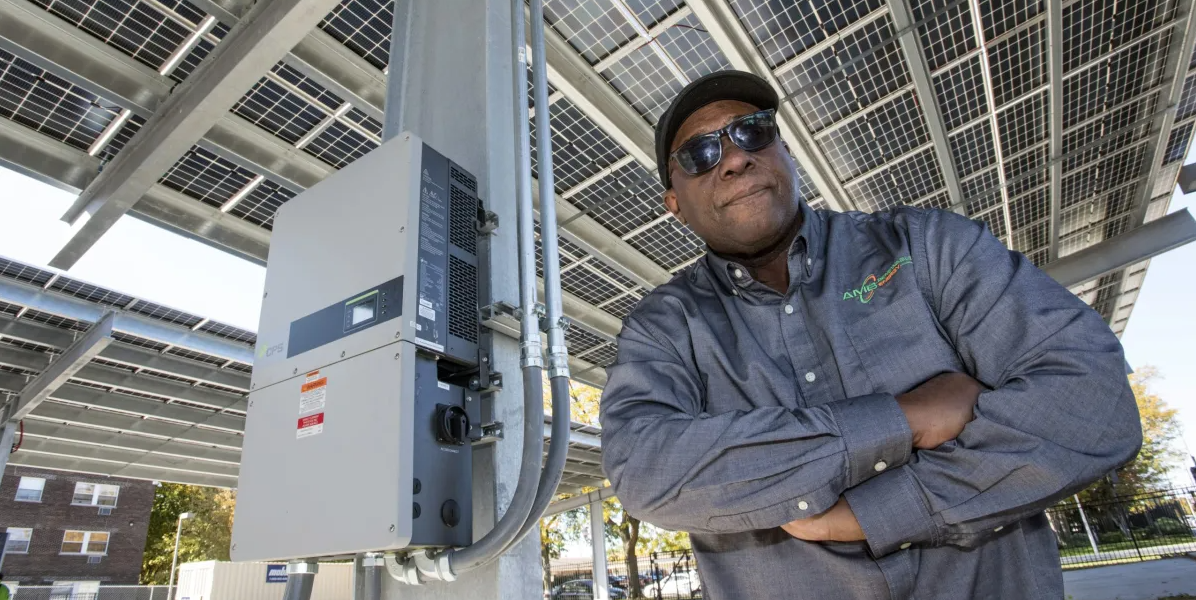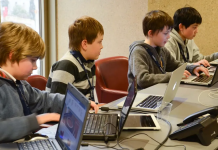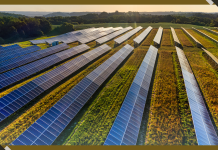Written by: Audrey Henderson
On a chilly October morning, Arthur Burton stood in the parking lot of the Chicago Urban League. Since its establishment in 1916, the iconic South Side organization has provided advocacy and opportunity for environmental justice communities facing a two-sided dilemma — disinvestment on one hand, and disproportionate exposure to harmful pollution on the other.
Burton established his company, AMB Renewable Energy, Inc, in 2019 to address both. One of the company’s most recent projects has been to install solar panels and electric vehicle charging stations in the Urban League parking lot.
In addition to providing energy installation services, Burton also collaborates with Christopher Williams, CEO of Calumet City, Illinois-based Millennium Solar, to provide opportunities for members of disinvested communities to obtain training for green jobs.
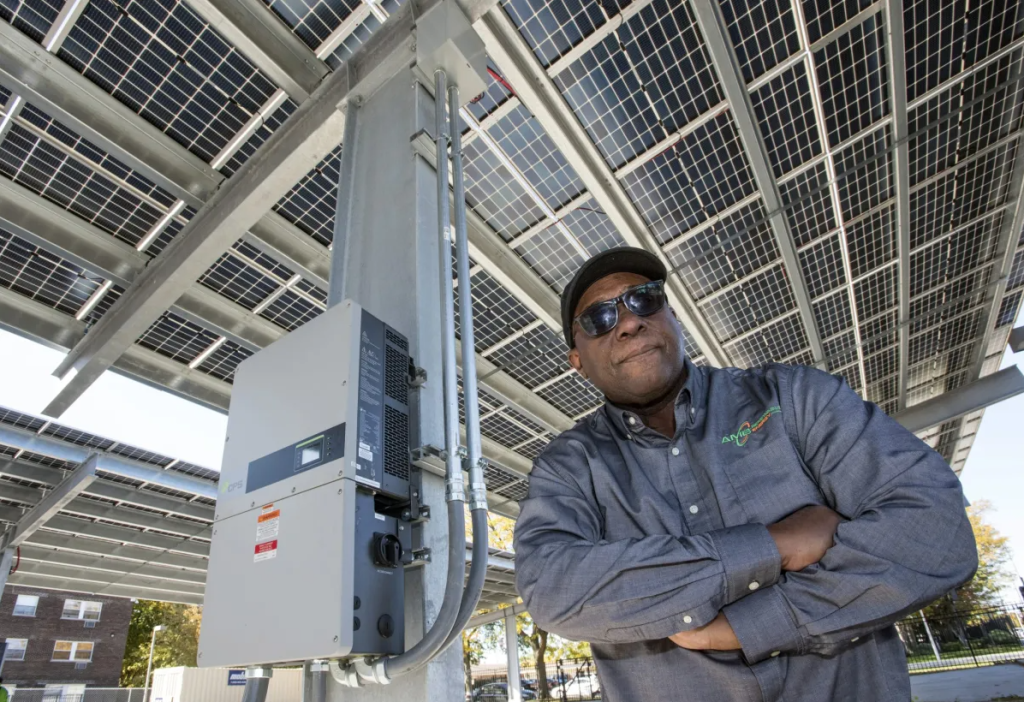
“As a minority business owner [I hope I] would have the opportunity to expand this business and continue to grow opportunities for people who never thought opportunities could come their way, and [provide] cutting-edge technology and be successful at it,” Burton said.
Expanding employment opportunities
The training program operated by AMB Renewable Energy and Millennium Solar offers specialized instruction for recent high school dropouts and other high-risk young people residing in disinvested communities, with a special emphasis on teens and young adults between ages 14 and 24. Trainees are also directed to the program through the Safer Foundation, which works to find opportunities for individuals exiting the correctional system.
“Those are guys that come out that don’t feel like they have another opportunity in life,” Burton said. “We want to give them that opportunity. We want to have them to be able to look at this as something that would be life-changing for them and their families. So, we feel there’s a need for this, especially with the infrastructure bills being passed, and we want to just have our community involved in this whole process.”
Training includes segments in installing solar, EV charging, and heating and cooling systems. Sessions range from six to eight weeks, providing a total of 30 to 40 hours of training, Burton said.
As part of its workforce development program, AMB Renewable Energy recently employed a training cohort on a 93-kilowatt rooftop solar array in Pontiac, Illinois, partnering with Renewable Energy Evolution, LLC, located in Lake Forest, Illinois. The project was one of the largest awarded to date under the Illinois Solar for All initiative. The installation provided cohort members with valuable hands-on experience, while providing a showcase for the company, Burton said.
Burton is working to obtain recognition for the program as a Future Energy Jobs Act and Climate and Equitable Jobs Act hub, which would open up much-needed additional funding. AMB Renewable Energy also participated in a ComEd energy efficiency incubator program that enables it to use the utility’s mentors in collaboration with its own workforce development program.
Burton himself brings a wealth of experience to the sustainability sector. After completing a bachelor of science degree in telecommunications management at DeVry University in Chicago, he worked with AT&T for 18 years as a technical support manager, then went on to receive certifications in solar, building electrification and electric vehicle charging technologies.
Before launching AMB Renewable Energy, Burton established Cornell Capital Partners LLC in 2011, providing general contracting services for residential and commercial rehab projects on Chicago’s Southeast Side, as well as working on government projects.
However, Burton eventually developed a desire to narrow his scope of projects to reduce overhead. He was eager to make the move into offering a more specialized set of services targeted toward the clean energy sector.
“Being able to offer these types of services in an underserved community, I just thought it was a good opportunity for me to use my expertise to do something [to] give back, and reduce the carbon footprint,” Burton said.
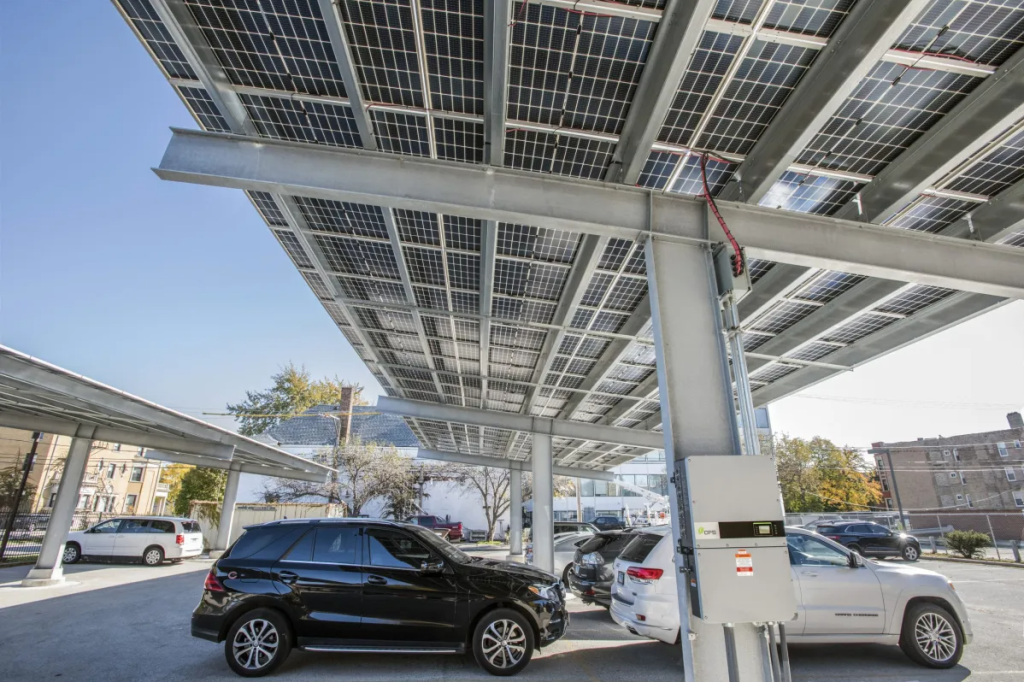
‘How does it affect your community?’
AMB Renewable Energy works in collaboration with a number of organizations, including EVmatch, Blacks in Green, Community Charging Initiative, ISeeChange, Qmerits, Renewable Energy Evolution and Switch Energy, to identify opportunities for clean energy projects. Through these alliances, the company has developed a number of projects in and around Chicago, including EV charging stations, solar panels and other clean energy systems, Burton said.
Burton and AMB Renewable Energy completed its first clean energy project in 2020 — the installation of a Level 2 EV charging station at St. Paul’s Church on Chicago’s North Side. The company worked on the installation with EVmatch, which coordinates funding for nonprofit organizations to allow them to install EV charging stations and similar renewable initiatives.
AMB Renewable Energy again collaborated with EVmatch, along with Community Charging Initiative, to install two Level 2 charging stations at Plant Chicago in Chicago’s Back of the Yards community on the Southwest Side in 2021.
The solar and EV charging station installation at the Urban League, where Burton also partnered with Renewable Energy Evolution, LLC, will ultimately provide solar-powered electricity for the entire building, along with adding much-needed community access in one of the city’s many EV charging deserts.
For Burton, projects like these, which implement mitigation efforts against climate change in environmental justice communities, are essential to correct the corrosive impact of decades of disinvestment. Education is also essential to generate buy-in.
“You can always reflect to climate change as a whole. You look at Antarctica, where your glaciers are melting at an enormous rate. You can look at some of the high tide waters that’s coming in because of the carbon footprint. Those are some examples that’s globally wide that someone could see.
“But how does it affect your community? Immediately, you have to look at it and say, ‘Okay, where do I fit in, in this picture, in this green economy? How can I be part of this solution? How can I learn more about it?’ I think the key is to be more informed of what sustainable energy is and how you can benefit from it as a whole as a family and a community,” Burton said.
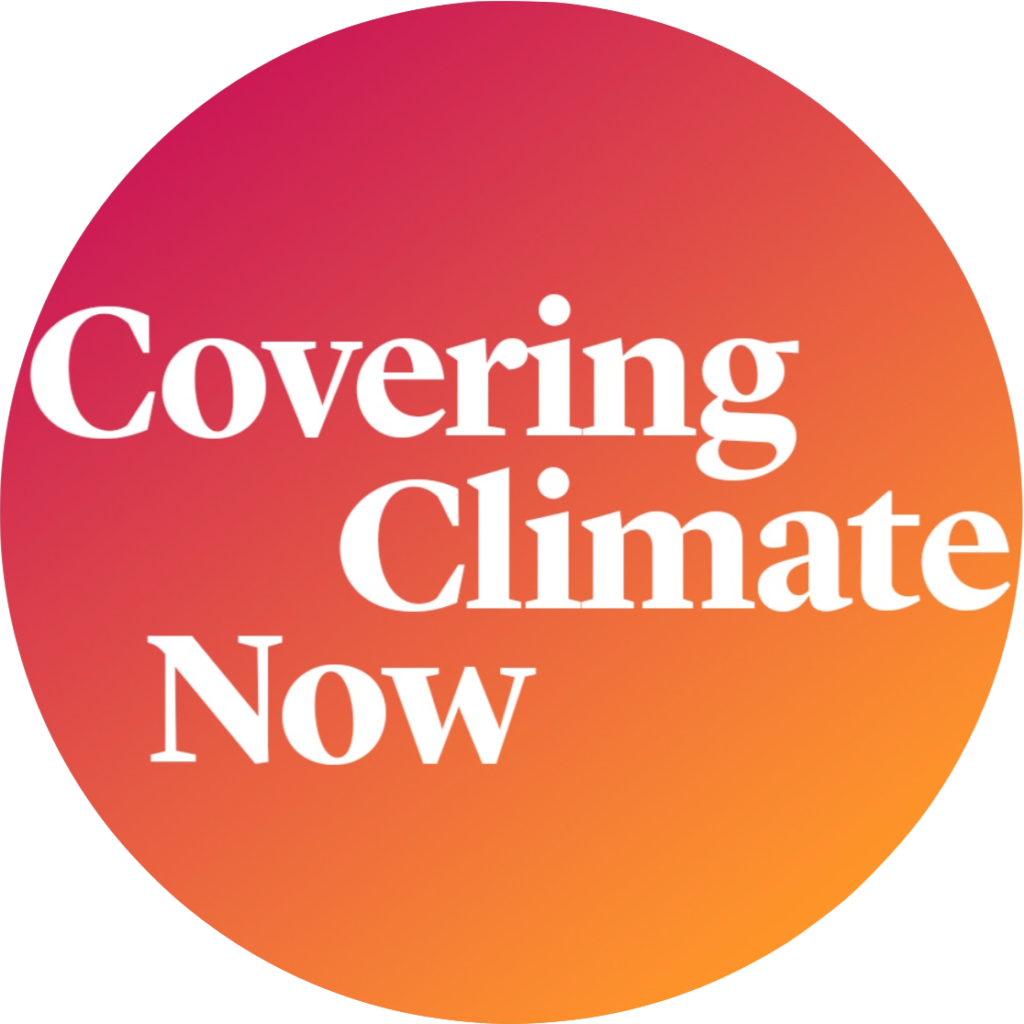
This story originally appeared in Energy News Network and is part of Covering Climate Now, a global journalism collaboration strengthening coverage of the climate story.

